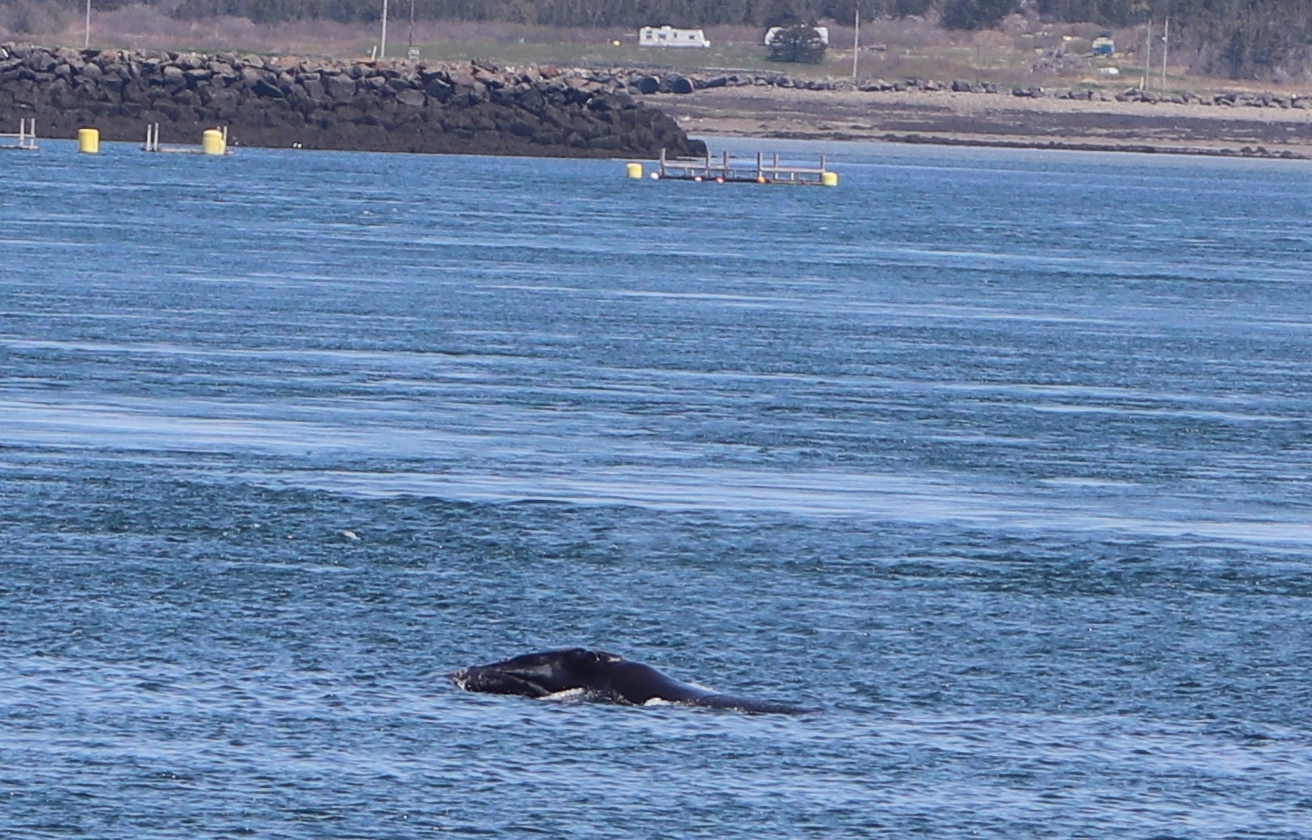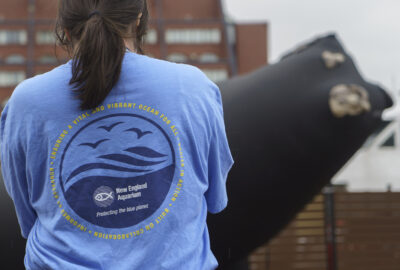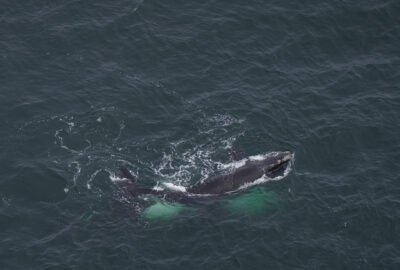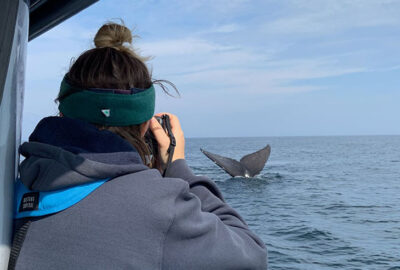18th Right Whale Mother Discovered Off Brier Island, Nova Scotia
By Philip Hamilton on Thursday, June 03, 2021

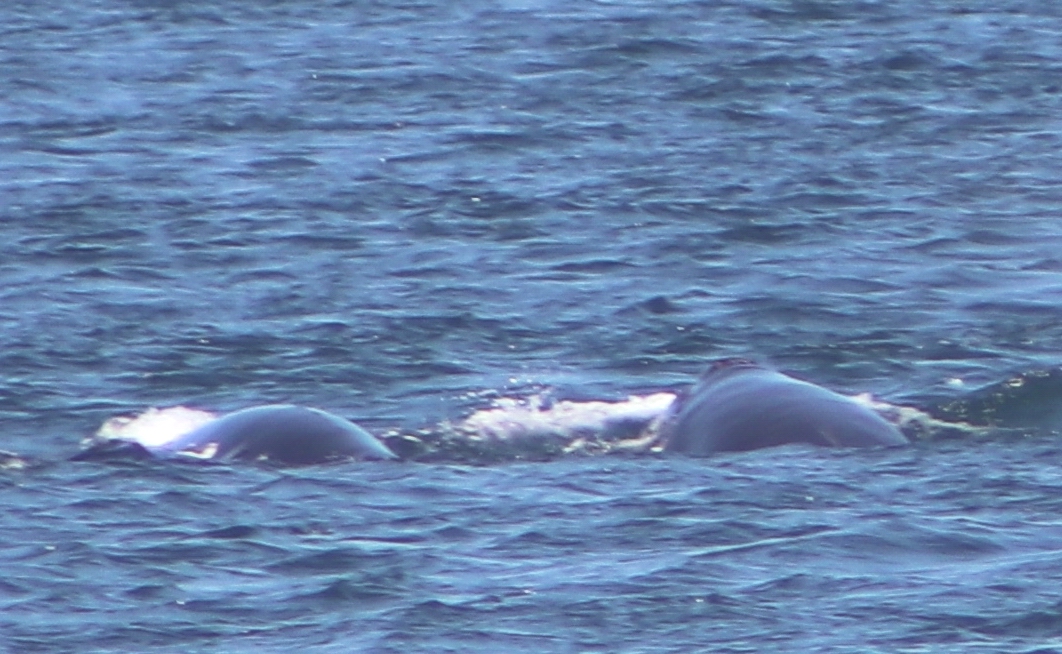
On May 20, 2021, Amy Tudor, a naturalist for Mariner Cruises Whale Watching on Brier Island, Nova Scotia, was on the ferry heading towards Long Island, N.S., when she spotted a whale 100 yards from the ferry. It was just a brief look, but being an experienced naturalist, she immediately recognized it as a young right whale. She called her husband and asked him to grab her big camera with a 300 mm lens and take photographs from the Brier Island shoreline. Those photographs, taken over a two-hour period, show a mother right whale and a small calf moving back and forth in Grand Passage until they swam west out of the passage and into the Bay of Fundy.

On Memorial Day, some of those images were relayed to Moe Brown of the Canadian Whale Institute who forwarded them to the right whale team from the Kraus Marine Mammal Conservation Program at the Anderson Cabot Center for Ocean Life at the New England Aquarium. Because every mother/calf sighting is important, the team reviewed the pictures quickly and were able to determine that this was in fact a new mother for the year!
The mother was identified as a whale named “Lobster,” Number 3232, in the North Atlantic Right Whale Catalog maintained at the Aquarium. Lobster, named because the identifying callosity pattern on the front of her head looks like a lobster with claws, was born in 2002 to mother “Catspaw,” Number 1632, and gave birth to her first calf in 2015 at the age of 13. She and her 2015 calf were seen and photographed just briefly by an observer on a dredge in the channel outside of Brunswick, GA, and that was the only sighting of the pair that year. What luck that a skilled observer with a camera was onboard. It seems Lobster has proven equally elusive this year! Again, luck was on our side that Amy Tudor was alert during that ferry crossing and knew just what was needed to document the pair. Lobster’s sightings highlight the importance of reporting right whale sightings—one never knows the surprises that a right whale sighting can reveal.
While right whale mother/calf pairs are usually first detected off the coast of the southeastern U.S. where most calves are born, Lobster joins a dozen or so mothers who were first detected with a calf north of the known calving area. For example, in 2017, two of the five mothers were not seen on the calving ground; they were first seen with their calves off Cape Cod in April. Whether Lobster and these 2017 mothers gave birth off the southeastern U.S. and were simply not detected, or gave birth in more northern waters is unknown. At least two mothers are known to have calved in northern waters. One of them, a whale named “Wart,” Number 1140, was first sighted with a calf in Cape Cod Bay in January!
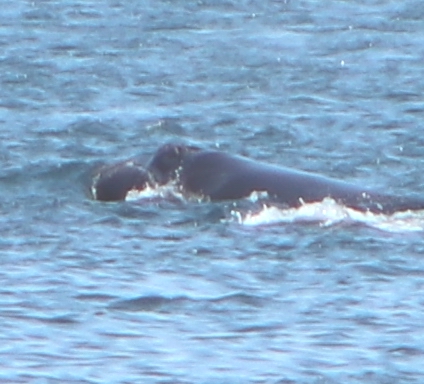
With this sighting of Lobster and her calf, the number of documented mothers in 2021 increases to 18. Calving in the 2010 decade has been well below the annual average of 23 from the previous decade. While 18 is still relatively low, it represents the highest calf count since 2013 and every calf brings us hope. This species remains critically endangered with fewer than 400 individuals remaining.
Human impacts, specifically entanglements in fixed fishing gear and vessel strikes remain the biggest threats to the survival of this species. Efforts to reduce the lethal and sub-lethal impacts of these threats must be immediate and sustained priorities in both Canada and the U.S. The increase in calving is encouraging as it shows us that these whales are resilient and will not only survive, but thrive if we effectively eliminate human-caused injuries and mortalities.
Lobster’s sighting in the eastern Bay of Fundy in May is not completely unexpected. Although right whales are more commonly found in the Grand Manan Basin in the Bay of Fundy in July through October, mothers and calves have been seen early in the season along the western shore of Nova Scotia, often only seen once or twice before moving on. Given that Lobster has been a regular visitor to the Gulf of St. Lawrence in recent years, there is some hope they will be seen there later this summer. Unless she and her calf are seen again and the calf’s identifying marks photographed well, we will not be able to track this young whale through its life, just as we are unable to track its sibling from 2015. The Lobster lineage is shaping up to be one that likes to remain a mystery.
